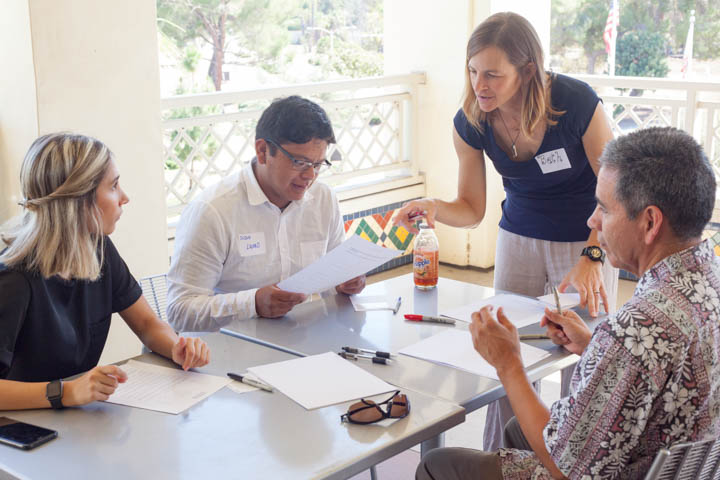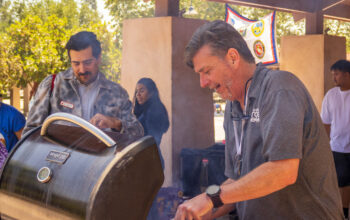Ideas on how to improve community issues such as homelessness and water conservation were brainstormed by Pierce architecture and engineering students during the “Collaboratory Kick-off” at the Student Services Building on Friday, Sept. 30, 2016.
The two-hour session was part of the beginning stages of a National Science Foundation (NSF) grant-funded project started by Assistant Professor of Engineering Beth Cheung and Assistant Professor of Architecture Beth Abels called C.A.P.T.I.V.A.T.E. (Collaboratory Achievement Project to Impact the Value of Architecture & Engineering Technology Education).
This project was awarded $200,000 by the NSF’s Advanced Technological Education Program (ATE) in July, and intends to span across disciplines and studies despite its ties to the technology-based program, according to Cheung.
“Beth Ables and I have been talking about starting this,” Cheung said, “what we call “The Collaboratory,” which is the engagement of students, faculty and the community so that students are working on real-world problems as part of their education.”
Together, the 15 students and new architecture hire Patricio Gallegos, were led by Cheung, Ables and Adjunct Professor of Architecture Brian Vazquez through timed and structured brainstorming activities, which started with a list of rules that emphasized positivity and respect.
“What we’re hoping to do is pilot a project, at least one, maybe two this semester, in our engineering graphics and design technology class and our architecture class,” Cheung said. “If we only get one project piloted that’s okay. We’ll consider that a success and then try for more in the future.”
The attendance that was comprised of almost all architecture students, came up with a list of issues in the community and narrowed them down by voting. The issues that moved forward were: homelessness, water conservation, bike lanes and helping blind people move through the city.
Architecture major Ashley Morales heard about the brainstorming event in class.
“I like seeing all the ideas that people have come up with as a group,” Morales said, “and I think that it’s interesting to see some of us came up with similar things so we know there’s similar issues in the community that we want to address.”
Groups brainstormed solutions to the four issues. The group working on the most-voted on issue regarding bike lanes, proposed solutions such as generating more funding and creating bike share programs such as the one in downtown Los Angeles with help from organizations such as the Los Angeles County Bicycle Coalition and local councils.
“We got some ideas and things that our students are interested in,” Cheung said, “and the three of us – Brian and Beth and I, will think about how we can actually get to that next step of making this a project that students are working on.”
The next meeting is Oct. 14, according to Cheung, who says they are inviting any community organizations or businesses to join them. The location is to be determined.
“I think it’s a really important thing to get in much as touch with the community as possible and I think it’s just really great that we’re taking ideas from students not just the people who run the show,” Zayota Ortiz, architecture major and vice president of the Architecture Club said.




